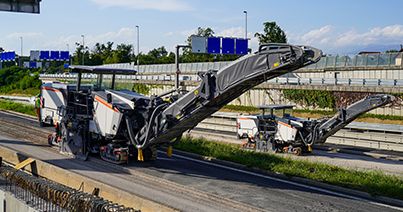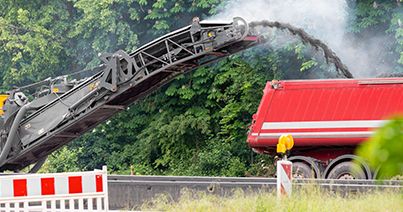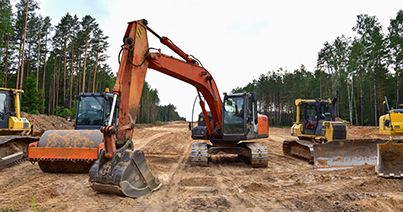
Essential for various infrastructure projects, trenching is a fundamental technique that plays a crucial role in building and infrastructure development. Ideal for creating narrow, controlled excavations, trenching is essential for various construction applications, from utility installations to laying down foundations. Here are some helpful tips to ensure safe and efficient trenching on your construction site.
1. Soil Conditions
Different soil types require unique approaches to stabilization and excavation. Professionals must carefully assess ground composition, water table levels and potential ground movement. Proper technique involves using appropriate shoring systems, monitoring soil stability and adapting excavation methods to the specific ground conditions encountered.
2. Equipment Maintenance
Tools and machinery must be maintained to ensure optimal performance and longevity. This includes regularly checking and replacing worn components, maintaining proper equipment tension, and following manufacturer guidelines. The complexity of trenching equipment means that even minor wear can significantly impact project efficiency and safety.
3. Technological Advancements
GPS-guided excavation, laser-precision techniques and automated equipment are revolutionizing how underground channels are created. These innovations allow for unprecedented accuracy, reducing the margin of error and improving overall project efficiency. Real-time soil condition monitoring and advanced ground-penetrating imaging provide insights that were previously impossible to obtain.
4. The Environment
Minimizing ground disturbance, managing soil efficiently and rapidly restoring excavation sites have increasingly become more top of mind. By creating a balance of infrastructure needs with environmental preservation, you can reduce the ecological impact of underground installation work. This approach requires careful planning, precise execution and a commitment to sustainable practices.
5. Cost Management
Effective cost management in trenching involves several strategies including minimizing excavation volume, optimizing the utilization of materials and equipment and extensive experience and strategic planning. This includes careful scheduling, selecting the right equipment for the job, and ensuring that all team members are well-trained and aware of best practices

Solutions to Common Trenching Problems
Problem: Carbide Fracture
- Cause: Challenging cutting conditions or extreme impact.
- Solution: Evaluate the cutting environment and adjust the cutting parameters to reduce impact stress. Use high-quality carbide tools designed for tough conditions.
Problem: Thermal Cracking
- Cause: Challenging cutting conditions, inadequate material penetration, inefficient material conveyance, excessive heat generation.
- Solution: Improve cooling methods, ensure proper material penetration, and optimize material conveyance to reduce heat buildup. Regularly inspect and maintain equipment to prevent overheating.
Problem: Excessive Carbide Wear
- Causes: Highly abrasive cutting conditions, excessively high rotation speeds, cutting at depths beyond recommended parameters.
- Solution: Adjust machine rotation and feed rates to match cutting parameters with the specific material and conditions, extending the life of carbide tools.
Problem: Steel Wash
- Causes: Inefficient material conveyance, abrasive cutting conditions.
- Solutions:
- Consider using specialized tips or hardfacing to improve wear resistance.
- Increase the feed rate to improve material removal efficiency and reduce build-up.
- Ensure proper machine setup and adjust cutting parameters for effective material conveyance.
Problem: One-Sided Steel/Wear on Gage
- Causes: Conical not rotating freely, misaligned blocks, sticky cutting conditions, worn blocks, excess material build-up.
- Solutions:
- Clean the conical and remove any foreign particles.
- Tap the conical gently to restore proper rotation.
- Realign blocks and ensure they are in good condition.
Problem: Shank Breakage
- Causes: Worn block bore, deteriorated sleeve, challenging cutting conditions, blunt or missing cutting tip.
- Solution: Regularly inspect and replace worn components. Ensure the cutting tip is sharp and suitable for the material being cut.
Problem: Shank Bending
- Causes: Worn block bore, worn-out sleeve, hard cutting conditions, blunt or missing cutting tip.
- Solution: Conduct regular maintenance checks to replace worn parts and ensure the cutting tip is in good condition.
Problem: Broken Hub/Hub Failure
- Cause: Worn-out block showing lateral play.
- Solution: Replace worn blocks and ensure proper alignment to prevent lateral play.
Problem: Retainer Failure
- Cause: Worn-out block with excessive lateral play.
- Solution: Replace the worn block and ensure the retainer is properly secured.
Problem: Sleeve Breakage
- Causes: Challenging cutting conditions, worn-out sleeves.
- Solution: Regularly inspect and replace sleeves as needed. Adjust cutting parameters to match the conditions and reduce stress on the sleeves.
Contact a Kennametal Sales Representative for a comprehensive evaluation and appropriate solutions for your trenching operations.

Related Articles
- Living on the Edge of PCD and Earth-Cutting OperationsTooling solutions are constantly being pushed to their limits against some of the toughest materials on the planet. PCD has emerged as a clear winner when it comes to durability and high performance. Find out more.Tooling solutions are constantly being pushed to their limits against some of the toughest materials on the planet. PCD has emerged as a clear winner when it comes to durability and high performance. Find out more.
- Road Rehabilitation Applications and Tooling SolutionsMaintaining and improving infrastructure is always a constant. Here are five key applications for road rehabilitation, why it's important and the tools involved.Maintaining and improving infrastructure is always a constant. Here are five key applications for road rehabilitation, why it's important and the tools involved.
- Key Tips and Solutions for Trenching in ConstructionTrenching is a fundamental technique that plays a crucial role in building and infrastructure development. Here are some helpful tips to ensure safe and efficient trenching on your construction site.Trenching is a fundamental technique that plays a crucial role in building and infrastructure development. Here are some helpful tips to ensure safe and efficient trenching on your construction site.
- Safety Tips in Road Rehabilitation Projects Road rehabilitation is essential for maintaining and improving our transportation infrastructure. Discover key safety tips and best practices to ensure successful and secure projects.Road rehabilitation is essential for maintaining and improving our transportation infrastructure. Discover key safety tips and best practices to ensure successful and secure projects.



